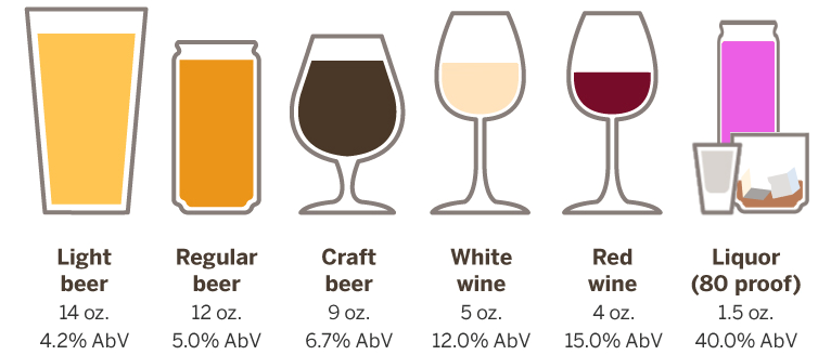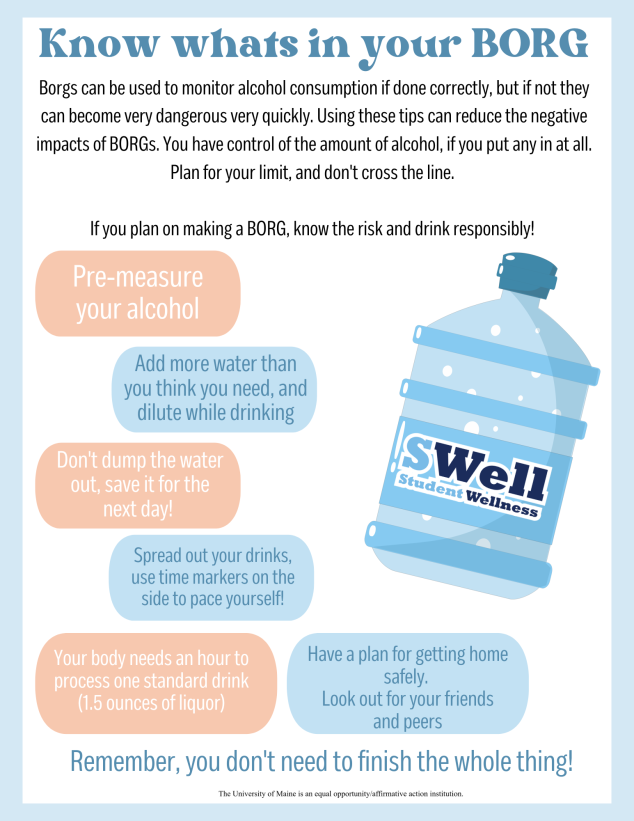Alcohol Use
Alcohol as a strong intoxicant that can alter your perception and experience depending on how much alcohol or food you’ve consumed, how much you weigh, your genetics, medication, etc. It takes approximately 10 minutes to feel the affects of each serving of alcohol, meaning that each person needs to take time be aware of and understand their body’s reaction. The only person in charge of an individual’s body and decisions should be themself. Don’t allow other people to guide or influence how much you consume.
If you or someone you know is struggling with alcohol use, or would like more information, there are on-campus resources that can help. Connect with the Counseling Center, Northern Light Primary Care, or SWell to learn more.
Standard Drink Size
The amount of liquid in the cup does not indicate how much alcohol is present. You can’t go by just how much liquid is in the container: a standard class of beer contains a relatively low amount of alcohol compared to a shot glass of liquor, which has a much higher concentration. This is referred to as Alcohol by Volume (AbV). The higher the AbV, the lower the amount of liquid in the serving size.
Know what’s in your BORG
Borgs can be used to monitor alcohol consumption if done correctly, can become very dangerous very quickly. Using these tips can reduce the negative impacts of BORGs since you have control of the amount of alcohol, if you put any in at all. Plan for your limit, and don’t cross the line.
If you plan on making a BORG, know the risk and drink responsibly!
- Pre-measure your alcohol with a shot glass
- Add more water than you think you need, and dilute while drinking
- Don’t throw the water out; you will need it later.
- Spread out your drinks and use time markers on the side to pace yourself
- Your body needs an hour to process each standard drink (1.5 ounces of liquor)
- Have a plan for getting home safely. Look out for your friends and peers
Remember, you don’t need to finish the whole thing!
Possible Effects of Alcohol
Short Term
-Impaired Speech, Decision-making, Judgement, Inhibitions, etc.
-Increased Heart Rate
-Impaired Coordination and Ability to Operate Machinery
-Risky Behaviors Increase
-Increased Aggression
-Coma or Death
-Pregnancy
Long-Term
-High Blood Pressure
-Cancer
-Early Onset Liver Disease (age 25-34)
-Weakened Immune System
-Learning/Memory Issues
-Mental Health problems (depression, anxiety, or psychosis)
-Social Problems (loss of job or family issues)
-Alcohol Use Disorder (AUD)
-Sexual Dysfunction
-Weight Fluctuation


